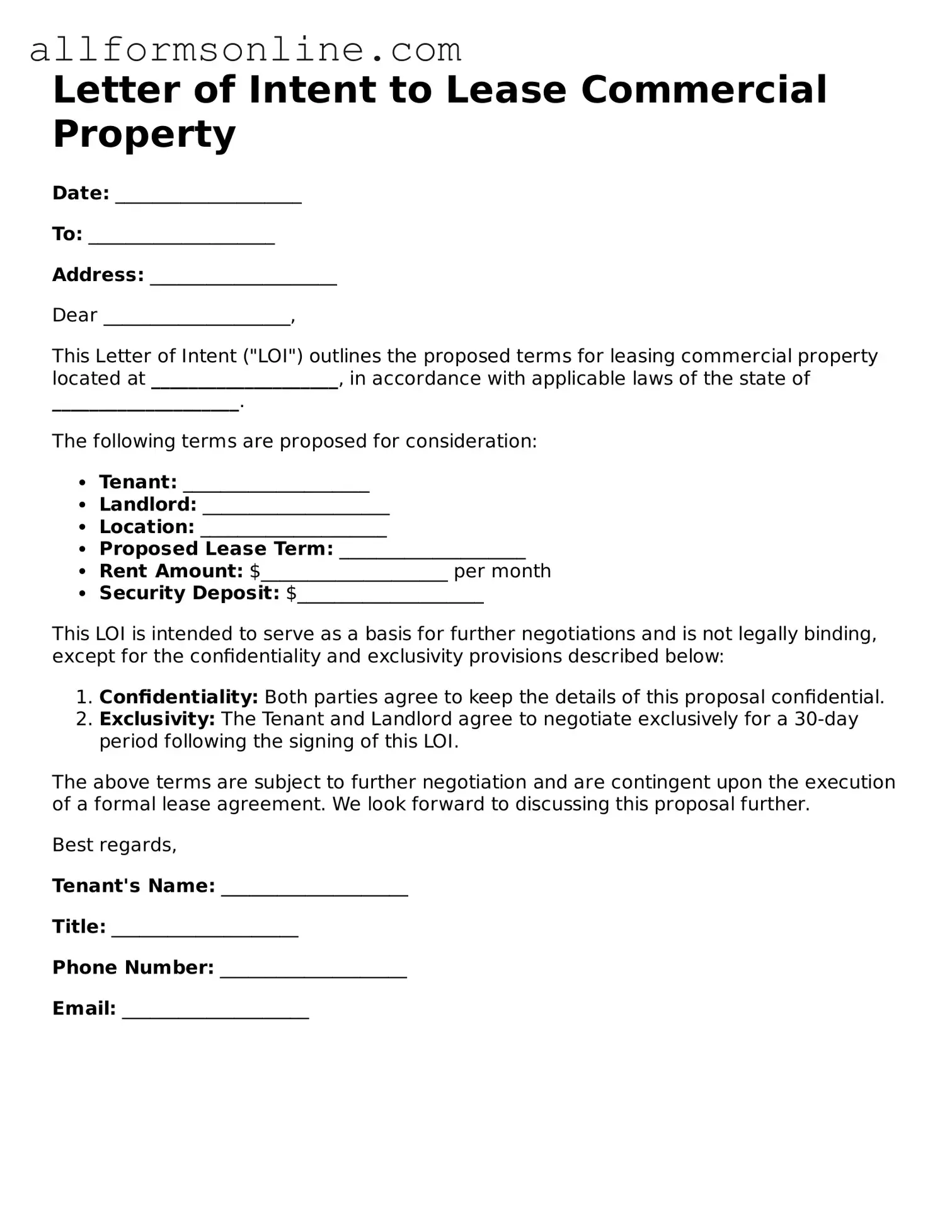What is a Letter of Intent to Lease Commercial Property?
A Letter of Intent (LOI) to Lease Commercial Property is a preliminary document that outlines the basic terms and conditions under which a tenant intends to lease a commercial space. It serves as a starting point for negotiations and helps both parties understand the key elements of the proposed lease before drafting a formal agreement.
Why is a Letter of Intent important?
The LOI is important because it clarifies the intentions of both the landlord and the tenant. It helps to establish a mutual understanding of critical factors such as rent, lease duration, and property use. This document can prevent misunderstandings and save time by addressing major points before entering into a more detailed lease agreement.
What key elements should be included in the Letter of Intent?
Typically, a Letter of Intent should include the following elements: the names of the parties involved, a description of the property, proposed rental terms, lease duration, any contingencies (like financing or inspections), and any special conditions or requests from either party. Including these details can streamline the negotiation process.
Is a Letter of Intent legally binding?
Generally, a Letter of Intent is not legally binding, but it can contain certain binding provisions, such as confidentiality agreements or exclusivity clauses. It is crucial for both parties to understand which parts of the LOI are enforceable and which are not. Consulting a legal professional can provide clarity on this matter.
How does the Letter of Intent affect the formal lease agreement?
The LOI serves as a framework for the formal lease agreement. Once both parties agree to the terms outlined in the LOI, they can proceed to draft a detailed lease document that incorporates these terms. While the LOI is a preliminary step, it can significantly influence the final lease agreement.
Can the terms in the Letter of Intent be changed later?
Yes, the terms in the Letter of Intent can be changed later during negotiations. However, any modifications should be documented and agreed upon by both parties to avoid confusion. Flexibility is often necessary as both sides work to finalize the lease agreement.
Who typically prepares the Letter of Intent?
Usually, the tenant's representative or attorney prepares the Letter of Intent. However, landlords may also provide a draft. It is advisable for both parties to review the document carefully and consider legal advice to ensure that their interests are adequately represented.
What happens if the parties cannot agree on the terms in the Letter of Intent?
If the parties cannot agree on the terms outlined in the Letter of Intent, they may choose to renegotiate or abandon the deal altogether. It is essential for both parties to communicate openly during this process to reach a mutually beneficial agreement. If negotiations stall, exploring other properties or options may be necessary.
